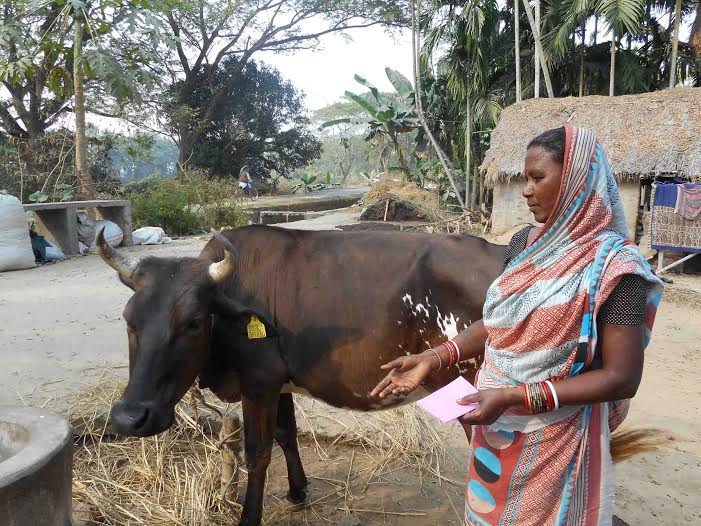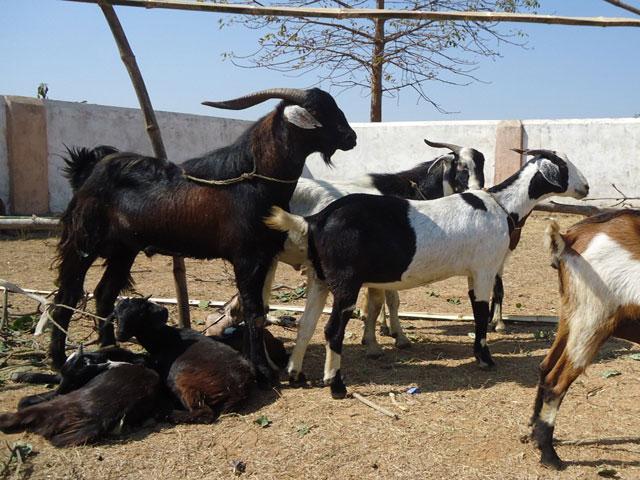Odisha sets Indian farm sector growth agenda

At the national level, income from animal farming rose from Rs.91 to Rs.763 in nominal terms during the period whereas in Odisha – the income rose from Rs.16 to Rs.1,314.
 India’s central government has broadened the horizon of agriculture ministry by focusing on farmers’ welfare who often face distress due to swings in the monsoon rains.
India’s central government has broadened the horizon of agriculture ministry by focusing on farmers’ welfare who often face distress due to swings in the monsoon rains.
Farmers’ income can be stabilized by strengthening flow from allied activities such as livestock and fisheries.
Eastern state Odisha adopted this changed approach to the farm sector’s sustainability over a decade before it surfaced at the central level.
By focusing on income from cultivation as well as of other sources such as farming of animal, non-farm business, wages and fishery activities, it will be possible to double the income of the farmers.
Odisha has done this already. Let’s run through how the ground level implementation has yielded results over a decade in the state.
In the Union Budget 2016-17, Finance Minister Arun Jaitley outlined the objective of doubling the farmers’ income by the year 2022 to avoid any agrarian distress.
Researchers have also been looking for statistics to find out if there is any instance of doubling farmers’ income in any province.
Odisha has been found to be the only province which has doubled the income of farm households during the period from 2003 to 2013.
It is indeed very encouraging trend!
This can be viewed as significant since the average monthly income in real terms dropped in the neighboring states of West Bengal and Bihar during the review period.
 Haryana, Andhra Pradesh, Rajasthan, Chhattisgarh, Karnataka, Madhya Pradesh and Tamil Nadu were also able to achieve an increase in real income of the farmers within the period of time.
Haryana, Andhra Pradesh, Rajasthan, Chhattisgarh, Karnataka, Madhya Pradesh and Tamil Nadu were also able to achieve an increase in real income of the farmers within the period of time.
At an all India level, there were not instances other than Chhattisgarh where average farm income doubled. In states like Bihar, West Bengal, and Jharkhand, there has been a decline in farm income.
But net income from farming of animals rose sharply. The average monthly national net income from animal farming rose by 3.21 times in real terms.
In Odisha, 58% of the rural households are basically agricultural households, heavily dependent on incomes from the farm sector.
They are engaged in various farming activities like cultivation of field crops, horticulture crops, fodder crops, plantation, and livestock farming including poultry.
In 2003, the farmers’ average household monthly income in Odisha stood at Rs.1,062 and surged to Rs.4,976 in 2013.
Total income of farmers in Odisha rose 4.7 times in nominal terms. But after adjusting the income of the household using Consumer Price Index (AL), the real income was found to be doubled.
At the national level, income from animal farming rose from Rs.91 to Rs.763 in nominal terms during the period whereas in Odisha – the income rose from Rs.16 to Rs.1,314.
In real terms, the net income from farming of animals in Odisha rose 33.35 times and the next biggest rise in Jharkhand where the income rose 5.88 times.
But such an impressive growth trend has not been observed in any other sector in Odisha.
The net income from cultivation, wages, and non-farm business rose 1.79 times, 1.41 times and 1.54 times respectively in Odisha.
Although 1% of the rural households derive a major source of income exclusively from livestock farming, 54% of the households are engaged in farming of animals as per the survey conducted in the state.
The increase in income from livestock farming mainly contributed to double farm income in Odisha.
The monthly average net income worked out as Rs.2,384 for households engaged in livestock farming in 2013, according to the National Sample Survey (NSS) data.
The share of livestock output such as milk, meat, eggs has risen gradually in the state.
The share of output from livestock which was 13.5% of the total output in agriculture and allied sector during 2004-05 went up to 19% during 2013-14, at the current price.
 During the10-year review period, livestock sector grew at a Compound Annual Growth Rate (CAGR) of 17%. This decadal growth is much higher compared to CAGR of 11% in the farm sector.
During the10-year review period, livestock sector grew at a Compound Annual Growth Rate (CAGR) of 17%. This decadal growth is much higher compared to CAGR of 11% in the farm sector.
This impressive growth in the farm sector and farmers’ income was made possible with active intervention of the state government over a decade, much before the central government’s recent thrust on the farmers’ welfare.
Odisha has been pursuing a lot of measures to make livestock farming as a viable economic activity. The state has adopted a pro-poor Livestock Sector Policy in 2002 and took up the expansion of artificial insemination network since then.
Incentivizing commercial poultry sector has also shown positive impact over the years. In 2005, a total of 2 million birds were there in the commercial layer sector. This has almost doubled in 2015.
Every year, more than 100,000 cross-bred cows are added to the existing bovine population.
The eastern state has set up a number of poultry hatcheries to supply day old chicks to the farmers. It has put in place widespread vaccination and de-worming and genetic improvement programmes.
Under the Odisha Agriculture Policy, a number of initiatives were taken to provide capital investment subsidy for the promotion of broiler and layer farming, goatery and diary projects.
Odisha is probably the only state that provided Rs.7.5 million as capital investment subsidy for the establishment of a poultry layer farm.
Other measures like reimbursement of local tax (VAT) on poultry ingredients like maize and broken rice, waiver of land conversion charges for setting of poultry units, adoption of the Odisha Bovine Breeding Policy and Odisha Poultry Development Policy are some of the positive directions from the provincial government.
The measures and initiatives pursued by the government which resulted in doubling of income in real terms over the period 2003-13 is not a surprise outcome in the country.
Odisha’s experience gives a broad understanding of what contributes to the net increase in income of farmers. Other states can follow this tested model of the farm sector growth.

(The author works as Commissioner-cum-Secretary of Fisheries and Animal Resources Development Department, Government of Odisha and can be reached at [email protected])












































